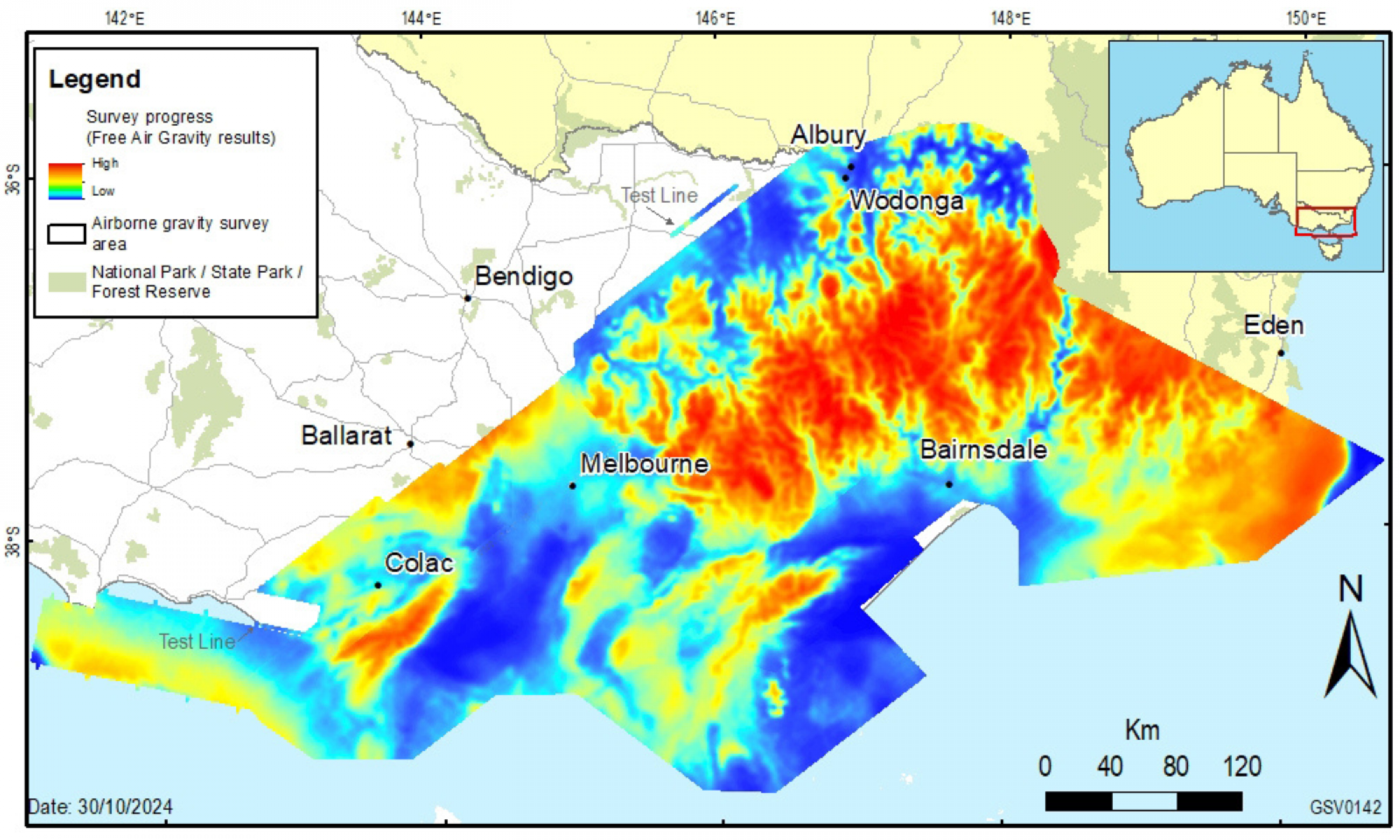
1 November 2024
The Department of Transport and Planning’s Geodesy team has completed a large-scale airborne gravity survey across southern and eastern Victoria.
The new gravity data will improve the vertical accuracy of GPS positioning and enhance our understanding of Victoria’s geology, supporting government to manage its earth resources, infrastructure and natural hazards.
Conducted from 2022-2024, the survey collected consistent and evenly distributed gravity measurements across Melbourne, the Australian Alps, and eastern and coastal Victoria.
The result is the largest airborne gravity dataset ever collected in Victoria. It included a total of 197,217 kilometres of flight lines covering an area of approximately 150,000 square kilometres.
The survey involved a small, fixed-wing aircraft flying along a planned route, with flight lines spaced 1 km apart. Specialised gravity-sensing instruments in the aircraft was used to measure extremely small variations in the earth’s natural gravitational pull.
Integrated with previously captured airborne and land survey gravity datasets, the data will improve gravity models used in GPS devices to obtain heights to an accuracy of a few centimetres.
This will benefit a wide range of precise positioning applications including surveying and mapping, construction, water and environmental management, transport, precision agriculture, and other emerging and innovative applications of GPS technology.
The project was organised and performed together with the Department of Environment, Energy and Climate Action’s Geological Survey of Victoria and the Australian Government’s Geoscience Australia and is an excellent example of collaboration across government to deliver benefits to Victorian business and the community.
Read more about geodesy and the airborne gravity survey project:
Page last updated: 13/11/24